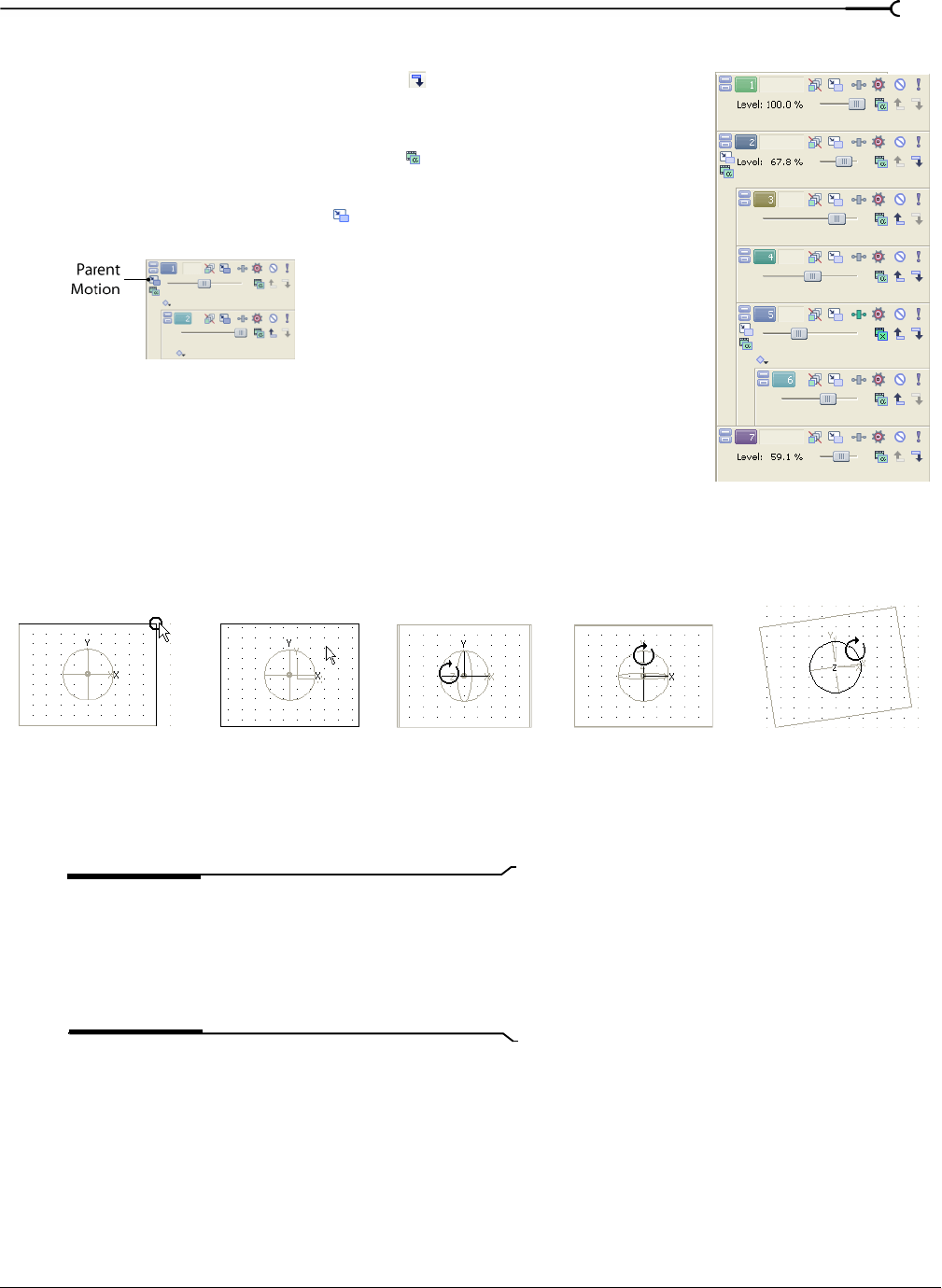
CHP. 14 USING VIDEO FX, COMPOSITING, AND MASKS
255
Composited group 3D motion
1.
Click the Make Compositing Child button ( ) on the tracks you want to
group to create a compositing
group. For more information, see Understanding
the parent/child track relationship on page 248.
2.
Click the Parent Composite Mode button ( ) on the parent track and choose
3D Source Alpha.
3.
Click the Parent Motion button ( ) on the parent track. The Track Motion
window is displayed.
Parent track motion affects the parent track and all child tracks.
In the sample track list to the right, parent track motion on track 1 will
affect tracks 1 through 6.
Parent track motion applied to track 4 will affect only tracks 4 through 6.
4.
Choose a setting from the Layout drop-down list to choose the workspace display you want to use. The
Layout setting allows you to see your track from various points of view.
5.
Adjust the selection area to change the viewable area of the track and its position in space. Guides are
displayed in bold to indicate how the track will be moved or rotated:
6.
Use the buttons at the top of the dialog to allow or prevent movement or scaling. For more information, see
Changing editing options on page 256.
Tip:
Right-click the workspace to display a shortcut menu that
displays commands to restore, center, or flip the selection box.
You can also force the box to match the source media's aspect
ratio or your project's output aspect ratio. Matching the output
aspect ratio can prevent black bars from appearing when you use
source media that does not match your project's aspect ratio.
7.
The 3D track motion occurs instantly, and the results are updated in the Video Preview window.
8.
Use the keyframe controller at the bottom of the Track Motion window to establish distinct track motion
settings throughout the duration of the track.
During playback, immediate frames are interpolated to create smooth motion. Expand the Keyframe
interpolation
heading on the left side of the window and drag the Smoothness slider to adjust the
interpolation. For more information, see Using keyframe animation on page 273.
Moving closer to or farther
from viewer. Drag across
corners to flip the track.
Dragging the track. Rotating left to right
around the Y axis.
Rotating forward or
backward around the
X axis.
Rotating around the
the Z axis.
